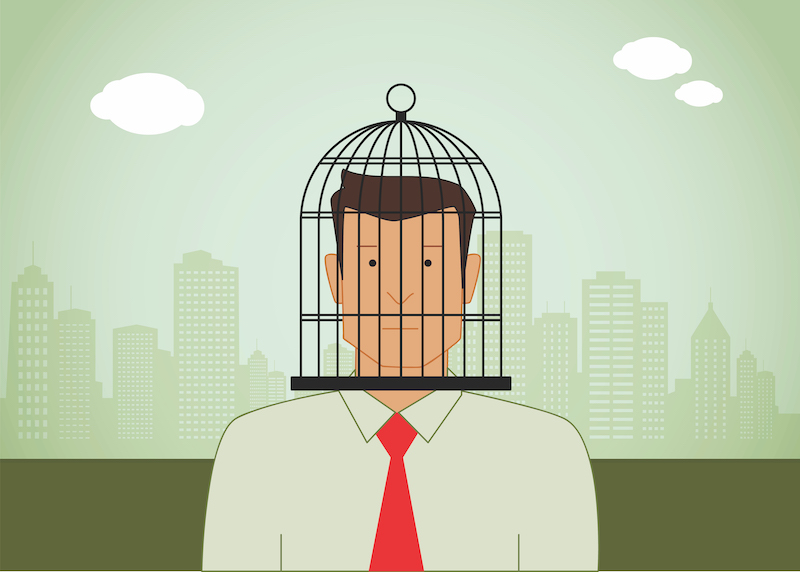

Features
Mental Health
Implementing a PHSMS goes long way in addressing workplace mental health
By Bill Howatt, Troy Winters and Craig Hrynchuk
 Photo: Vectorios2016/Getty Images
Photo: Vectorios2016/Getty Images Occupational health and safety (OHS) is a field of practice that has evolved out of a need to control risk and reduce loss (both people and property) in the workplace. Leaders in manufacturing and other sectors that perceive employees are at risk for physical injury understand the need to focus on physical health and safety.
Leader motivations in OHS prevention often include protecting employees from injury as well as reducing the organization’s workers’ compensation claims.
Organizations that enjoy sustained excellence in health and safety performance, have management systems (policies, procedures, protocols, training) and cultures in place to encourage all employees to consistently focus on the importance of health and safety. In high performing organizations, continuous improvement using a Plan-Do-Check-Act (PDCA) framework is the norm, as is the measuring of results and monitoring of risk.
Incidents and near miss are investigated to root cause, corrective action is taken when rules are not adhered to, and auditing helps ensure that what is supposed to be happening is happening.
One big difference between psychological, physical safety
The most obvious difference for many employers pre-COVID-19,, was the focus and importance of physical health were driven by identified industry sector needs and employee functions (such as health and safety reports). A manufacturer, for example, would have focused on personal protective equipment, safety updates, inspections, and joint health and safety committee meetings. In contrast, a law firm would rarely talk or think about physical health and safety.
Psychological health and safety (PHS) should be important in all organizations. Changes in provincial and Federal OHS legislation around psychological health and safety, workplace violence and harassment, human rights and tort law are requiring employers to become increasingly responsible for protecting employees’ psychological health and safety.
 Exclusive: Take the survey on psychological vulnerability in the workplace
Exclusive: Take the survey on psychological vulnerability in the workplace
Please complete and share with colleagues the confidential survey Employees’ Perceived Psychological Health & Safety Risk Screen. Talent Canada and Howatt HR are conducting a study to explore how well the Psychological Vulnerability in the Workplace model (outlined below) is working. We’ll be putting our results in a report and sharing it live during Talent Canada’s Workplace Mental Health Virtual Summit on Sept. 15, 2020. Stay tuned to Talent Canada for more information about this must-attend event for leaders, HR professionals and front-line managers.
Key insights into implementing a Psychological Health and Safety Management System (PHSMS)
- Primary objective: Much like the mandate of physical health and safety which is to protect employees from physical injuries, the primary objective of a PHSMS, is to reduce the risk of mental harm and injuries. The goal of psychological health and safety is to promote mental health and prevent mental injuries through identification and to reduce the risk for hazards that could negatively impact employee mental health or put them at risk for mental harm. Leaders must understand that all employees have a certain, non-perfect level of mental health, and like physical health if they don’t pay attention to it, they’re at increased risk of contracting a chronic disease. Employers who don’t take care of psychosocial hazards in the workplace that negatively impact mental health and don’t provided support to more vulnerable parts of their workforce, will have workers who experience mental harms or mental illness.
- Deliberate effort required for impact: Psychological health and safety are supported by a management system that leverages a PDCA approach to encourage continuous improvement, measurement and auditing to ensure that what should be working is working. Support for mental health in the workplace requires much more than simply having an employee and family assistance program and training a few managers. It needs intention and understanding that every interaction an employee has in the workplace can be positive or negative. Key factors such as feeling welcomed and included, level of work demand, manager-employee relationship, recognition of accomplishment or effort and job fit are some psychosocial factors that influence an employee’s experience.
- Prevention: The primary goal of OHS when developed for physical health and safety was prevention. Psychological health and safety also need prevention. Sadly, too many organizations have been launching programs designed to support mental health in the workplace, such as training managers for sensitive conversations, with little to no thought about what they can do to prevent mental harms and injuries. Being proactive involves focusing on getting ahead of factors that create unnecessary strain. These include respectful workplace policies and training that incorporates self-advocating, providing job flexibility where possible, educating the difference between mental health and mental illness, eliminating stigma by talking about mental illness and providing advice for obtaining professional support.
Bill Howatt is the Ottawa-based president of Howatt HR. For more information, visit https://www.howatthr.com. Troy Winters is the senior health and safety officer at the Canadian Union of Public Employees (CUPE) in Ottawa. For more information, visit https://cupe.ca/ Craig Hrynchuk is the Executive Director at the Alberta Municipal Health and Safety Association (AMHSA) in Alberta. For more information, visit https://www.amhsa.net/
Print this page